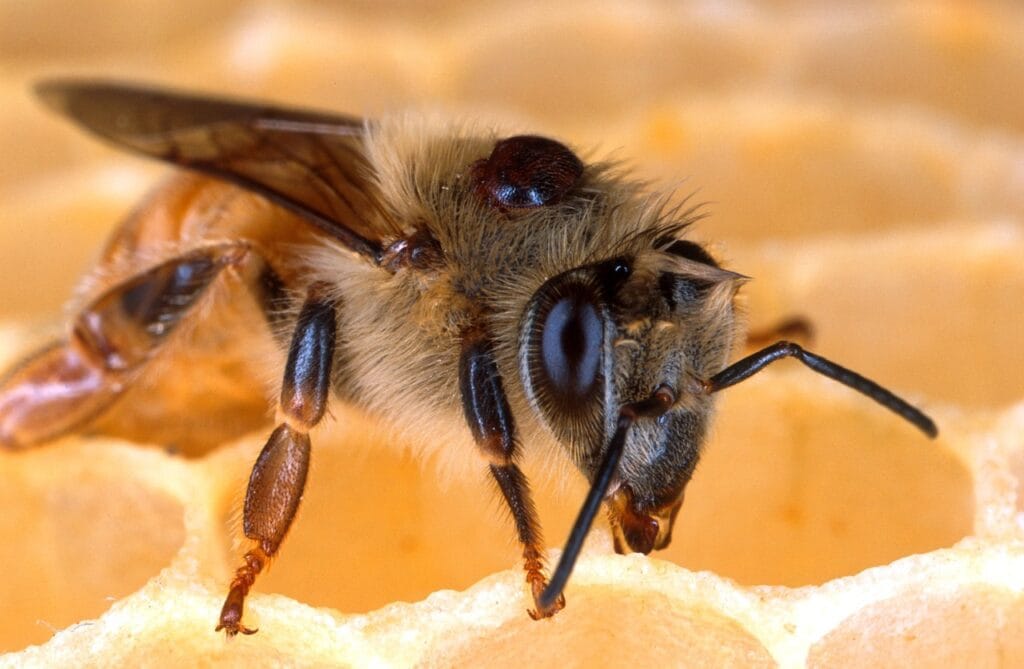Screenshot of a witbee Snelgrove Board
Double screen boards—often called Snelgrove boards—come in various styles and designs to meet the needs of different beekeepers and management techniques.
The core concept remains the same: a board with two parallel screens to separate colonies or spaces within the same hive while allowing heat and pheromones to transfer.
Common Design Variations
- Standard Double Screen Board
- Features a wooden frame sized to fit standard hive bodies (10-frame, 8-frame, or compatible with specific box types).
- Uses two layers of hardware cloth (usually #8 mesh) separated by a wood rim.
- Snelgrove Board (Full Version)
- This classic design, developed by Leonard Snelgrove, incorporates up to six pairs of small doors or gates—three or four pairs on the board’s edges, with each pair consisting of a top and bottom door.
- The multiple doors allow for precise management of bee traffic, aiding in swarm control and strategic colony splitting.
- Modified or Simplified Boards
- Many beekeepers build or purchase simpler versions featuring only one or two entrances, with fewer or no doors, optimized for their specific purpose (such as strengthening a weak colony or overwintering)[6][1].
- Boards may have bee space adjustments (thicker rims or spacers) to enhance ventilation or accommodate specific box heights[3].
- Specialty Designs
- Some commercial boards are “wax-dipped” or made from exterior-grade plywood (e.g., HDO ply) or cedar for durability and weather resistance[1][2][7].
- Certain models include colored paint for easy in-field identification[8].
- Boards are available in different sizes to match various hive configurations, such as 10-frame and 8-frame boxes[9].
Additional Features
- Entrance Placement and Control: Entrances can vary in location (end, side, or multiple sides) and may be closable or fixed. Snelgrove boards typically feature offset doors, meaning doors above and below the board are not directly aligned, for better bee management[4][8].
- Ventilation Options: Some designs incorporate central or side ventilation areas or larger mesh sections to improve airflow.
- Multiuse: Certain double screen boards double as ventilated inner covers, moving screens, or even specialty bottom boards[1][2].
Table: Key Design Variations
| Board Type | Number of Entrances | Location of Entrances | Special Features |
| Standard Double | 1 | One end or side | Basic, single upper entrance |
| Snelgrove (Full) | 6 pairs (top/bot.) | Three/four sides | Multiple closable doors |
| Modified/Simple | 1–2 | Varies | Simpler, DIY focused |
| Heavy-duty/Custom | 1+ | Varies | Wax-dipped, colored, vented |
Conclusion
There is considerable variety in double screen board designs, ranging from simple homemade versions with a single entrance to commercially produced Snelgrove boards with multiple doors and robust weatherproofing.
This diversity allows beekeepers to select or build boards tailored to their specific management practices and hive setups[6][1][3][4][8][5].
Ad – Amazon Associate
Bestseller #2
Bestseller #3
Bestseller #4
⁂
- https://www.hillco.buzz/products/double-screen-board-wax-dipped-10-frame
- https://www.naturesimagefarm.com/products/untitled-aug26_10-23
- https://wbka.com/wp-content/uploads/2021/12/a018themanyusesofasnelgroveboard.pdf
- https://barnsleybeekeepers.org.uk/snelgrove-method/
- https://www.betterbee.com/instructions-and-resources/making-a-swarm-stopping-split-using-a-double-screen-board.asp
- https://www.youtube.com/watch?v=WoZVSclX-Uc
- https://rpbeeworks.com/product/cedar-double-screen-board-for-apimaye/
- https://beeculture.com/build-a-double-screen-board-snellgrove/
- https://backyardfarm.com/snelgrove-double-screen







